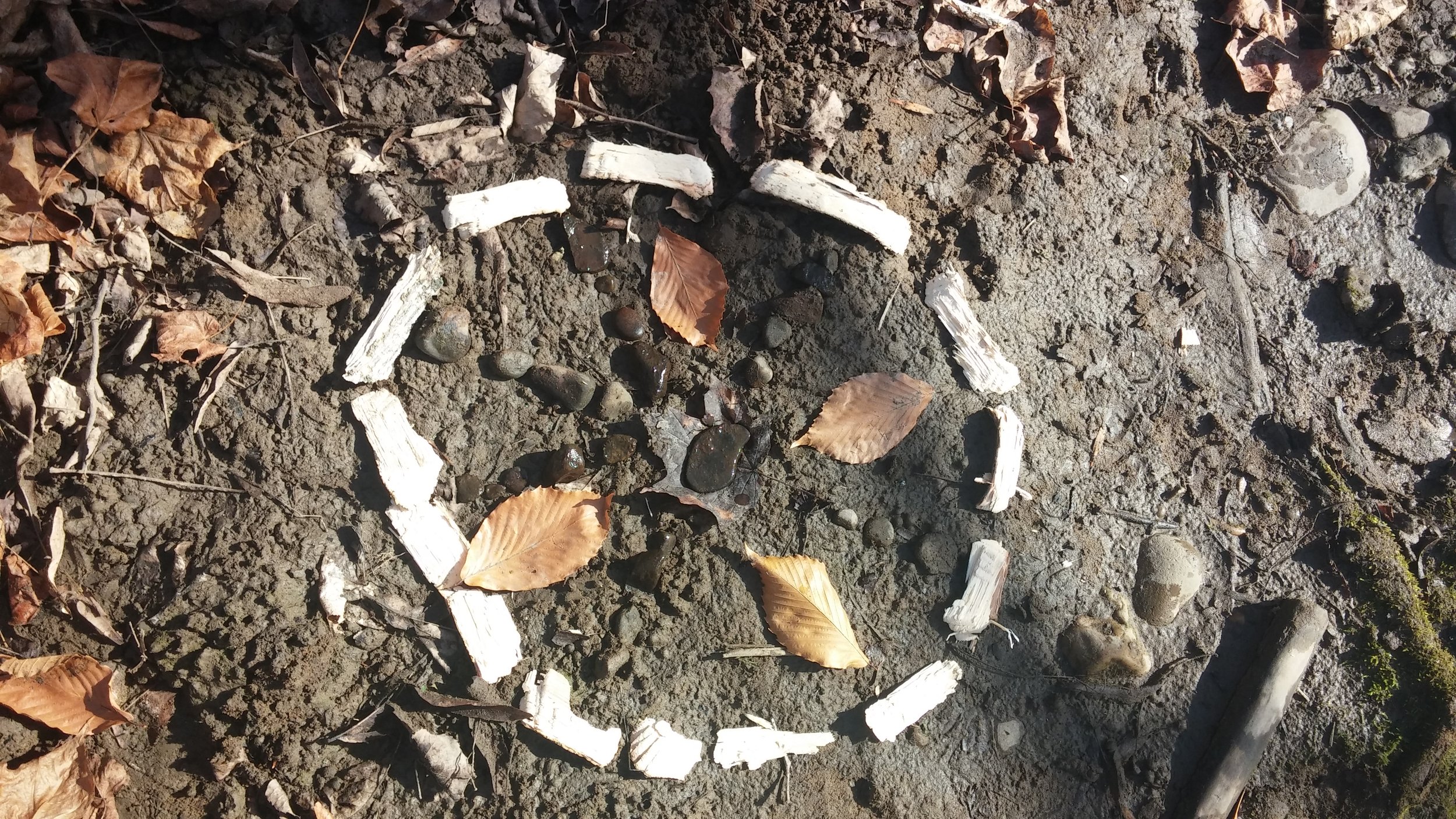
Herbal Medicine and the Meeting of the Worlds
The roots of herbal medicine stretch far and wide throughout the matrix of human history, absorbing the essential nutrients of time during its journey within the narrative of the Earth. It’s a tale of wildness, creation, and co-evolutionary alliances that has engaged us in the twining of the original conversation of the elements that continues its atomic exchange and feeds and nourishes the fire at the hearth of the soul of the world. Our ongoing collaboration with the plants is coursing forward on the genetic scrolls of our ancestors and must be consistently renewed and renegotiated in order to keep this tradition alive.
Bioregional Herbalism ~ An Introduction To Ecological Relationship & Place-Based Practice
Bioregionalism is a word that was originally termed by activist Peter Berg in the early 1970’s, the height of many counterculture movements across the United States. He lived in San Francisco where a multitude of forces often gathered in various forms of protest as a reaction to a mainstream culture that was dominated by the ever-present paradigms of war and competition. Peter Berg died in July of 2011, but left a legacy and vision that lives on within many of today’s social justice and environmental movements.
Making Flower Waters
Making your own hydrosol or flower water is a simple, economical and ecologically sound method of extracting the scent and medicine from flowers. Flower waters are also an excellent alternative to essential oils that are expensive and have serious environmental consequences. Although I love essential oils and they are undeniably powerful medicine, they have become highly commericalized leading to the overharvesting of wild plants and promoting large scale agri-farming and monocropping of flowers to meet market demands. In an article written by Jen Landry, Dipl. ABT (NCCAOM), that recently appeared in United Plant Savers Journal, to make one pound of essential oil it requires 50-60lbs. of Eucalyptus, 200-250 lbs of Lavender and 5,000-10,000lbs. of Rose blossoms. The copious use of essential oils as a suitable remedies for a vast array of conditions and illnesses is not sustainable and in most cases unecessary. I do think it's important to recognize, however, that essential oils are being used in place of harsh chemical cleaners and synthetic fragrances. This is a step in the right direction when we consider the grave and hazardous results to that the use of such substances as produced for the planet and people. But, as to be expected, the popularity of essential oils and the recognition of their benefits has lead to superflous over-consumption. There are many alternatives to essential oils that are as equally effective and far more responsible.
Vitex For Female Health and Hormonal Balance
Vitex agnus-castus, also called ChasteTree is a shrub in the Verbena family and is native to the Mediterranean area of the world. It loves growing in wet places, along river beds, and other wet areas, but has been cultivated throughout Europe and used medicinally worldwide. I can attest to its desire for water as I have been growing one in a pot for a couple of years. The Northeastern climate in the United States is not conducive to garden cultivation of Mediterranean plants so I move it back and forth from my porch to my living room seasonally. It definitely requires daily watering or the leaves will wilt. The dried fruits are the part that is used medicinally and they look like dark purple pepper seeds when dried. The seeds can also be used a spice and have a slight peppery, warming flavor. Another common name for Vitex is ‘hemp tree’, I’m assuming this is because its leaves resemble cannabis leaves being palmate with five separate leaves connected at the center.
Sacred Tea Ceremony
Many of us think of the Japanese tradition when we hear “Tea Ceremony” and they definitely have one of the worlds most beautiful and sacred ways of making tea a healing practice. Tea ceremonies have been done in different ways in many other cultures also. The English are famous for their afternoon teatime and a tea culture exists in many other countries where tea making is sometimes ritualized and sometimes just a part of daily life as is our American coffee culture. Many ‘hip’ communities in the United States now have “tea rooms” where people can gather and drink tea together while relaxing and visiting. There is even an “American Tea Ceremony” now that has been adapted from the Japanese version.
Winter and the Cycle of Life
Our modern world affords us the comfort and luxuries of central temperature control, artificial light, and a grocery store full of food from all over the world any time of year, but in the Northeast and other geographical locations with extreme seasonal fluctuations, it is nearly impossible not to be effected by environmental signals. Even in climates that experience less dramatic change there is always some shifting from season to season that influences day to day life. Regardless of our efforts to keep comfortable, our body systems, neurotransmitters, and DNA hold the intelligence of the ages and cannot be easily fooled by contemporary technological environmental management. When we live in a Northern climate the deep, darkening of Winter is difficult to refuse, try as we may. No matter how we may attempt to keep warm and avoid the impact of lack of sunlight, most of us still experience the effects of long nights, cold winds and the isolation that comes along with not wanting to leave the house and go out in the cold any more than necessary.
Living in Place and The Genius Loci
The concept of “Living in place” is derived from the definition of bioregionalism and has emerged as a new way of connecting to the land and creating a healthy relationship with community, our food, health care and life in general. The term ‘bioregionalism’ was coined by Allen Van Newkirk in the 1970’s. He founded the Institute for Bioregional Research and described a bioregion as “biographically interpreted culture areas…” In other words, he was identifying the inextricable connection between human life, health, culture and the ecology of the land. Land-based activist from Northern California, Peter Berg, further developed the concept as an element of the environmental movement. This movement began as a reaction to the industrial expansion and globalization monoculture that was burgeoning at the time, and still continues to dominate and drive cultural, economic and political values. In the wake of our modern technological and industrial ascension has been the decline of natural resources and widespread, seemingly irreparable pollution along with vast environmentally related health issues. Our collective ideals of competition, production, the amassing of material objects, comfort and monetary wealth drives most Western people away from direct contact with the Earth and the deeper rhythms of nature that once held the dynamic balance of life sustaining forces that fed and nourished our ancestors. These values have also disregarded the essential interdependence of human health on the health of the soil, water, air, plants, animals, bacteria and all that are a part of the network of life. An interdependence that signifies a mutually dependent relationship between synergistic organisms, each with their own unique ecological and life sustaining function.
Aralia Nudicaulis ~The Wild Ways of American Sarsaparilla
Botanical Name: Aralia Nudicaulis. A member of the Araliaceae or Ginseng family
Status: Native to North American in boreal forests. It is found beneath hardwoods in rich soil.
Common names: Wild Sarsparilla, American Sarsparilla, Small Spikenard, False Sarsparilla, Wild Licorice, Rabbit Root
Description: A perennial that grows in the woods of the Northern United States and Canada. The leaf stalk grows up to 18” tall with compound leaves that branch out into 3 groups of 5 each. The flower is an umbel that comes up beneath the leaves in groups of 3. The leaves die back in the summer leaving the flowers to ripen into purplish black berries. The root is gathered although all parts of the plant can be used. The main root grows vertically down just a few inches but there are secondary runners that grow horizontally. New plants emerge from these underground rhizomes forming interconnected colonies. Gather in the Spring or Fall.
Muscle-Skeletal Pain and the Gut Connection
Pain is a word that is used to describe a wide range of experiences that all humans encounter. There are many different patterns that occur throughout life that are considered to be painful and, ‘pain’ itself is not a disease, illness or syndrome but is a symptom of many. In the most literal sense, pain refers to any physical sensation that is unpleasant and causes one to take evasive action. It is also a signal that communicates to our brains that we must become aware of some dysfunction and make the necessary changes to make it stop. As herbalist and bodywork Tammi Sweet says, "Pain is a signal to change your behavior". That can mean many things including lifestyle and diet, but also mental and emotional behaviors, attitudes and thought processes. Evasive action is not always the most appropriate either. Changing our behavior can mean to stop evading something and explore more deeply into the core of any issue or injury in search of hidden or repressed feelings or matters. Sometimes what is called for is for us to actually move more deeply into ourselves and embody our unique Earthly form more completely. I taught Yoga for many years and always encouraged my students to find their 'edge' where they were not in pain but were stretching themselves, gently, beyond their comfort zone. This requires that we move our awareness into tight and sometimes scary places and re-associate or, some would say, occupy places that we may rather ignore.
The Medicine of Elecampane
The first day of spring is coming up quick on the calendar, but the weather in the Northeast doesn't seem to be aware of it. We have had one of the coldest and snowiest winters in many years and it has been hanging on and on. Along with the extended winter has come more coughs and colds and general dis-ease. One of my all time favorite remedies for colds, especially when the lungs are affected, is Elecampane. Elecampane was one of my very first plant allies as I used to suffer from asthma and chronic lung infections. Elecampane can remedy many different lung conditions and I have seen it work, at times, almost immediately. I am also deeply in love with the bright yellow luminosity of its flower and the strong, aromatic Earthy smell of its root. No matter how many times I have harvested this root, I am always enraptured by the first whiff of its perfume, and have been known to kneel right down with my nose to the dirt just breathing it in as deeply as I can.
Synergizing Germ Theory
Germ theory has been the major guiding force behind today’s biomedical research, practice and ambition. Germ theory evolved over centuries of philosophical exploration of the nature of human character and the origins of life. Humans have an inherent inquisitive longing to know and explain the source of their existence. At some point in the history of Western civilization and for many possible reasons, our collective paradigm adopted a reductionist perspective with which to examine the workings of the universe. Esteemed French philosopher, René Descartes (1596–1650), contributed the initial thoughts and writings on the philosophy of dualism. This binary system dissected the human organism into separated parts leading to the concept of the mind/body split and identifying the mind and body as contrary aspects; henceforth, ‘the dual’. Scientific exploration began to utilize this mechanistic structure of reduction to observe the fundamental operating systems of life as individual pieces, zooming in and dividing physiological functions to study them. This paradigm continues to govern our cultural endeavors toward all aspects of human life, and in the words of author and herbalist Stephen Buhner, we are all living inside Descartes psychosis.
Getting To Know White Pine
White Pine or Pinus strobus is the tallest tree native to the Adirondack forest;growing up to 150-200'+ with up to an 8' diameter, and was considered sacred by the First Nations of the Haudenosaunee(Iroquois). The White Pine was widely overharvested and more or less clear cut by European colonists but, thankfully, there are still several small old growth forests left in the mountains. These are also easy trees to grow and cultivated in any backyard in the Northeast, although they do best in acidic soil and, in fact, the needles are highly acidic when they fall(3.5) helping to create the necessary conditions for its survival.This will limit the growth of any plants below it with the exception of acid loving plants such as blueberries. I have 3 White Pines in my yard that I never have to mow under because the surface below them is nothing but a sweet bed of Pine needles.
Herbal Medicine and Social Justice
Plants and trees have been an integral part of human civilization and culture since life evolved on Earth. In fact, human beings have co-evolved with our green relatives and so, we have been genetically programmed to interact mutually and synergistically. We contain similar biological patterns that are expressed in a variety of adaptations. We all hold the exact same building blocks or elements, such as carbon, but arranged uniquely making us a separate system and yet, inextricably linked to all life. We and all other living organisms are descended from the same biological source; our ancestors, bacteria. Each and every species on Earth was sourced from these original life forms as they initiated new forms and structures evolving into more complex and creative functions.
Plantain~A Humble Plant With Big Medicine
Plantain-Broad Leaf Plantain(Plantago majus) Long or Lance Leaf Plantain (P. lanceolata)
Family:Plantaginaceae
Other names: Snakeweed, Whiteman's Foot, Round Leaf Plantain, Ripple Grass
Parts Used: Mostly the leaf but the seeds from Plantago psyllium raised commecially as a source of fiber and mucilage to be used as a laxative.
Qualities:astringent,decongestant,restorative, soothing diuretic, alterative, vulnerary, anti-inflammatory bitter, cold, dry and moist(it's mucilage moistens and soothes as it's astringency draws up),
Organ Affinity:Skin, Lungs, Intestines. Bladder, Kidney
Co-Creative Gardening
There are as many ways to garden as there are gardeners, but most garden "How to" books are pretty much the same with very useful information about when to plant and how to keep pests and diseases from your plants. Most of these books contain pictures of weedless gardens where the plants seem to be well aware of their boundaries and don't mix and match themselves or jump ship to the lawn. This is something that I always used to want but, after much frustration and back pain, I realized that this was just not my style.
Our Ears and the Herbs They Love
may never have become an herbalist had it not been for childhood ear infections. Ear infections are a common reason for many, many visits to doctor’s offices for young children especially under the age of five. They are also the cause of endless prescriptions for antibiotics. My daughter Hannah, at the age of three, was plagued with chronic ear infections along with other respiratory infections. We had been through several rounds of antibiotics and were referred to an ENT (ear, nose, throat specialist) who recommended that we have tubes put in her ears. At the time we didn’t have health insurance, and paying out of pocket for surgery would’ve been quite an expense. We were also told that Hannah had some minor hearing loss and that her speech and ability to learn would be impaired without the tubes.
Echinacea and All That
Echinacea has had a long history of documented use over the past 200 years. The Native Americans used it extensively and it was quickly picked up by the European settlers as a plant that could be used to heal just about everything. It is now among one of the most widely used and research herbal remedies in modern Western Herbalism and mainstream culture. Almost everyone has at least heard of Echinacea and many, many people have tried it in some form for its touted uses as a cold remedy, preventative and immune system stimulant among others. Some of these uses are accurate, some are overstated, and some are just plain marketing claims with no basis in tradition or research.

















